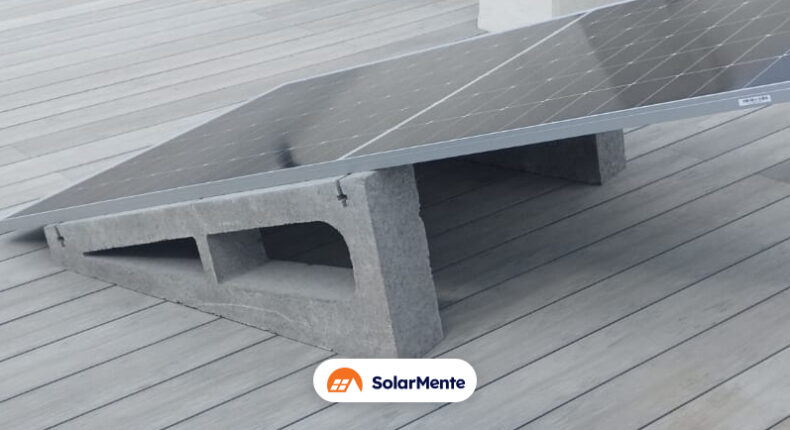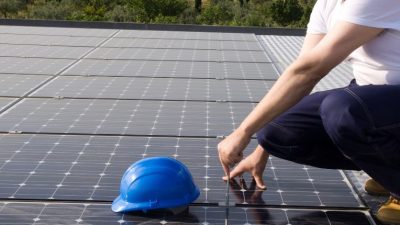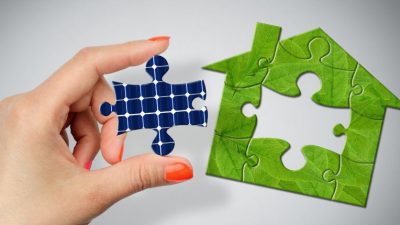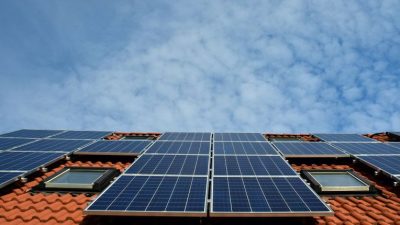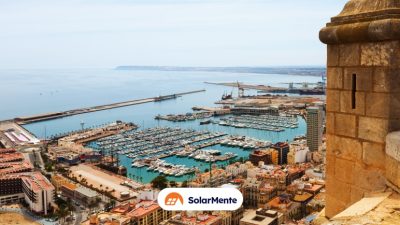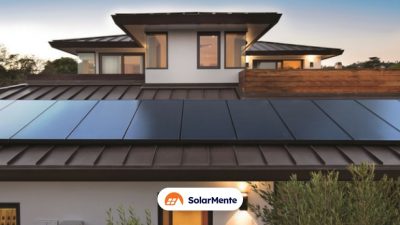Solar panel supports are an essential part of photovoltaic systems. Their purpose is to ensure the correct inclination of the modules and to fix them in such a way that they remain intact on a secure anchorage.
But what types of solar panel supports are there?
That is exactly what we are going to tell you in this article.
We will also explain the factors that influence the choice of the best option for your home.
What types of solar panel mounts are there?
Depending on the geographical area and the characteristics of the roof, there are different types of supports and anchors.
How do we choose one or the other?
Here we tell you in detail the most common structures that are used today.
Let’s get down to it.
Structures for solar panels on pitched roofs
Pitched roofs are common on single-family homes in Spain and are known as coplanar structures.
What are the advantages of these roofs?
They are easily adaptable, practical and capable of maintaining the necessary inclination and, in addition, they do not generate a negative visual impact once the photovoltaic system is installed.
Anchoring methods for coplanar structures
Similarly, many roofs in Spain are made of Arabic tiles.
What does this have to do with anything?
Well.
The type of anchoring for solar panels will be different, namely in these cases the “threaded rod”is used .
This method consists of perforating a small part of the tiles to introduce the rods, which will reach the base of the roof, and will be fixed and screwed in.
The structure is then fixed so that it is securely fastened.
What is the last step?
Positioning the solar panels by means of a kind of staples that ensure that they are fixed to the structure.
However, not all roofs are made of the same material and we can find fragile materials such as slate. In this case, drilling into the surface can lead to a risk of breakage.
How do we solve this?
Normally, hooks are used to support the solar panels. The procedure has two simple steps:
- The tiles are lifted and a part of the structure is screwed to the roof.
- On the protruding side of this structure, the photovoltaic panels will be placed.
And there is a third possibility: roofs made of sheet metal.
Although only 13% of roofs are made of this material, this can also be the case.
For this purpose, a structure known as “screw-plate” is used.
This metal structure for solar panels consists of making a small perforation in the upper part of the sheet metal, inserting the structure and screwing it in to prevent any movement, on which the modules will be placed.
Structures for solar panels on flat roofs
If we have a flat roof or the installation is done on the ground, it is essential to place the modules so that they are supported and inclined with respect to the horizontal angle.
The aim is to position them as if they were on a pitched roof.
Therefore, depending on the material and the degree of inclination, we can find different types of structures.
Let us not forget that the distance established (even if it is minimal) between the rows is essential in order to avoid casting shadows between them and to maximise the performance of the solar panels.
However, we also eliminate hot spots, i.e. areas of the panel with a higher temperature than the rest of the panel, which:
- affects the efficiency of the installation.
- degrades the materials due to high heat exposure.
Types of anchoring for solar panels on flat roofs
In these structures we can encounter the well-known sail effect.
This phenomenon occurs when wind currents displace the modules due to their inclination.
This can cause problems in the installation.
What can we do to avoid this?
Install ballasted structures that achieve greater stability.
Metal structures for solar panels usually use ballasts due to the lightness of the material, which is more prone to be affected by this phenomenon.
In these cases, concrete structures or similar heavy materials are often used to prevent the mobility of the solar panels. It is true that the cost may increase, but the advantage is that you can adjust the angle of inclination as you wish.
Vertical supports
There is another scenario where the roof is not suitable for a structure, i.e. the roof conditions do not allow it.
In these situations, the installation can be anchored on facades or walls.
What type of solar panel structure do we use in this case?
They need a specific structure which, as a general rule, is made of aluminium or steel alloy. The purpose is to withstand strong gusts of wind and snow. In addition, chemical anchors are used to ensure their stability.
Mobile solar supports
Finally, we come to a more advanced technology.
This type of structure has a more complex process, but very useful at the same time.
It works as follows.
It has movable axes and sensors that change according to the movement of the sun. In this way, solar radiation is harnessed to produce more energy.
In fact, it performs a movement that shares many of the same features as sunflowers. However, its complex installation can increase the cost of maintenance, and its production can increase by 15-40%.
However, their complexity means that they are currently only used for solar parks, as they require more space, maintenance and supervision.
How to choose the best structure for your solar panels?
Choosing the best support for your solar panels depends on several factors.
And as we all know, the needs of every home vary. So it is important to consider the following characteristics to make the right choice for you:
- The type of surface, i.e. the roof – is it pitched, flat, vertical?
- The material of the roof. Pay attention to its construction. Whether it is arabic tile, metal, slate. Check the component.
- The geographical area. The climate also influences and can damage the structure and the material. Take this into account.
- The orientation and inclination will also influence the energy yield.
In order to achieve the maximum yield from the photovoltaic installation, it is important to choose the right support according to the variables mentioned above.
The importance of solar panel mounts in an installation
No matter what the purpose of the installation is.
Whether it is for a home, business or institution, the solar panel support is necessary to hold the modules to the surface and start producing energy.
In principle, we would say that this is their primary function, but let’s not forget that they provide the correct orientation and inclination of the modules.
And yes, this also allows the system to work properly and we perceive a good performance of the installation to generate as much energy as possible.
To find out which is the best type of structure for your solar panels, it is best to consult a team of professionals who will carry out a personalised study and install the supports in accordance with the established regulations.
So, if you are thinking of switching to self-consumption, either by means of:
- Renting solar panels
- Purchase of the installation
We will make sure that everything is correct. Just click on one of the options above and we will make a study of your roof, without any obligation.

